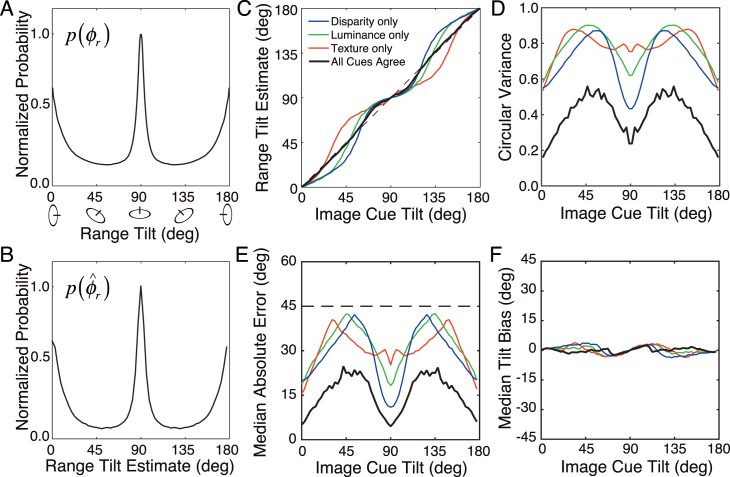Figure 7.
Tilt prior in natural scenes and optimal single-cue tilt estimates, variance, error, and bias. Three-cue performance is also shown for when all three cues agree. (A) Unsigned tilt prior in natural scenes. The tilt prior exhibits a strong cardinal bias. Slants about horizontal axes (tilt = 90°) are most probable (e.g., the ground plane straight ahead). Slants about vertical axes (tilt = 0° and 180°) are the next most probable. All other tilts are much less probable. (B) Distribution of optimal tilt estimates. Its shape is similar to the shape of the tilt prior. (C) Tilt estimates conditioned on individual image cue values and estimates conditioned on cases when all three cues agree. Specifically, blue indicates tilt given disparity alone E(ϕr|ϕd), green indicates tilt given luminance alone E(ϕr|ϕl), red indicates tilt given texture alone E(ϕr|ϕt), and black indicates the expected tilt value when all three cues agree. (D) The precision of the optimal estimates. Disparity alone yields the most reliable estimates for most, but not all, image cue values. When all three image cues agree, the precision of the optimal estimate is significantly increased (see Methods). (E, F) Median absolute error (magnitude) and bias of estimates as a function of image cue value. When all three image cues agree, there is a substantial increase in precision and a decrease in bias.

